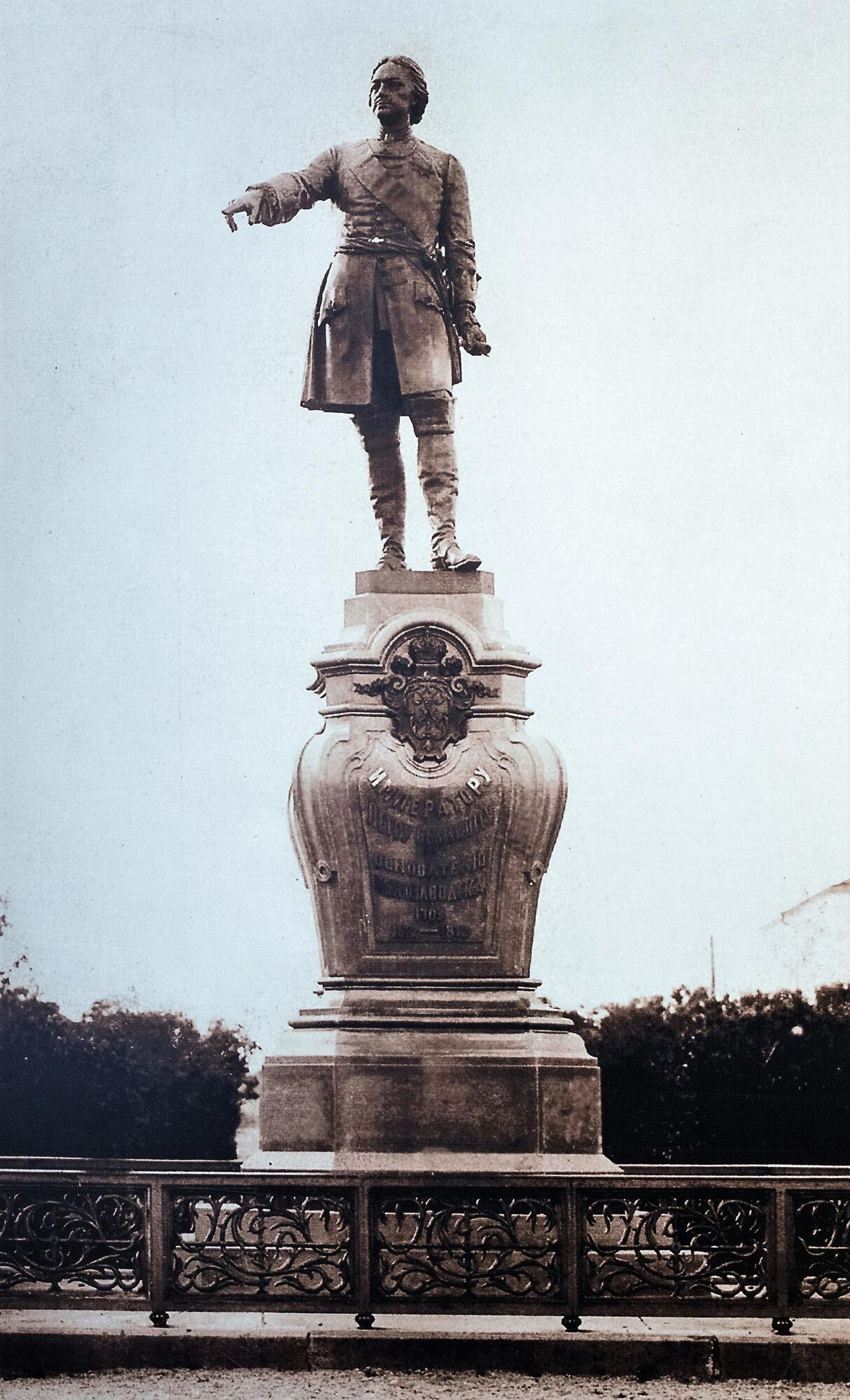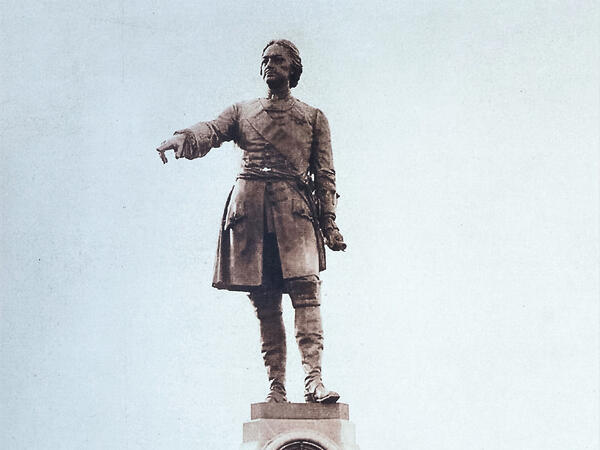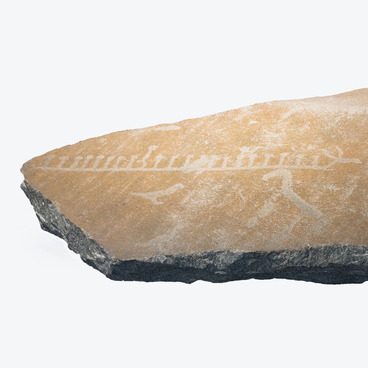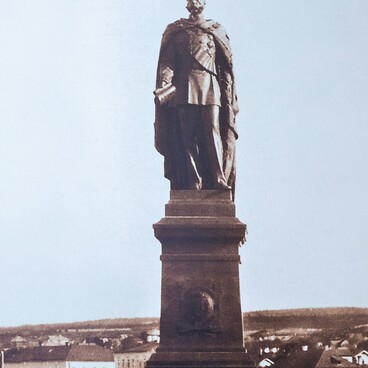The photograph features the monument to the Russian Emperor Peter I in Petrozavodsk. The monument is located on Petrovskaya Square, which nowadays is called Lenin Square. The name “Petrovskaya” was given to the square on the day when monument was opened. Before that it had been called Round Square.
It was not possible to find out who the author of the photograph was, but it was taken no earlier than 1876. This is evidenced by the openwork fence around the monument, made at the Alexandrovsky plant: it was installed precisely in 1876. The total height of the monument is 6 meters 30 centimeters, Peter the Great’s figure is 2 meters 90 centimeters, the pedestal is 3 meters 40 centimeters. The monument weighs over a ton. The photograph also shows fragments of buildings on Petrovskaya Square.
Sculptor Ivan Schröder and architect Ippolit Monighetti created the monument. The monument was cast in bronze, the pedestal was made of gray Serdobol granite. The monument was opened on June 29, 1873. The same day, the Natural-Industrial and Historical-Ethnographic Museum of the Olonets Governorate was opened in the governor’s house, located on the same square. Subsequently, it became the National Museum of the Republic of Karelia.
Grigory Grigoriev, who served as governor of Olonets province from 1870 up to 1890, initiated the creation of the monument.
On August 8, 1918, the Executive Committee of the Petrozavodsk City Council decided to dismantle all the monuments to the representatives of the Romanov dynasty. The monument to Alexander II was recycled, and the townspeople saved the monument to Peter I by covering it with boards and rubbish from a nearby park. When it was disassembled and transported, the sculpture of the emperor was damaged — the sword, overhead letters and some other elements were lost.
In 1940, the monument was restored and placed in the park on Zavodskaya Square near the Museum of Local Lore, which at that time was located in the building of the Alexander Nevsky Cathedral. In 1974, the restorations of the monument were started — overhead letters were created, the sword and spurs were restored. In 1978, on the 275th anniversary of Petrozavodsk, the monument was moved to the Onega embankment, where it is still located.
It was not possible to find out who the author of the photograph was, but it was taken no earlier than 1876. This is evidenced by the openwork fence around the monument, made at the Alexandrovsky plant: it was installed precisely in 1876. The total height of the monument is 6 meters 30 centimeters, Peter the Great’s figure is 2 meters 90 centimeters, the pedestal is 3 meters 40 centimeters. The monument weighs over a ton. The photograph also shows fragments of buildings on Petrovskaya Square.
Sculptor Ivan Schröder and architect Ippolit Monighetti created the monument. The monument was cast in bronze, the pedestal was made of gray Serdobol granite. The monument was opened on June 29, 1873. The same day, the Natural-Industrial and Historical-Ethnographic Museum of the Olonets Governorate was opened in the governor’s house, located on the same square. Subsequently, it became the National Museum of the Republic of Karelia.
Grigory Grigoriev, who served as governor of Olonets province from 1870 up to 1890, initiated the creation of the monument.
On August 8, 1918, the Executive Committee of the Petrozavodsk City Council decided to dismantle all the monuments to the representatives of the Romanov dynasty. The monument to Alexander II was recycled, and the townspeople saved the monument to Peter I by covering it with boards and rubbish from a nearby park. When it was disassembled and transported, the sculpture of the emperor was damaged — the sword, overhead letters and some other elements were lost.
In 1940, the monument was restored and placed in the park on Zavodskaya Square near the Museum of Local Lore, which at that time was located in the building of the Alexander Nevsky Cathedral. In 1974, the restorations of the monument were started — overhead letters were created, the sword and spurs were restored. In 1978, on the 275th anniversary of Petrozavodsk, the monument was moved to the Onega embankment, where it is still located.



